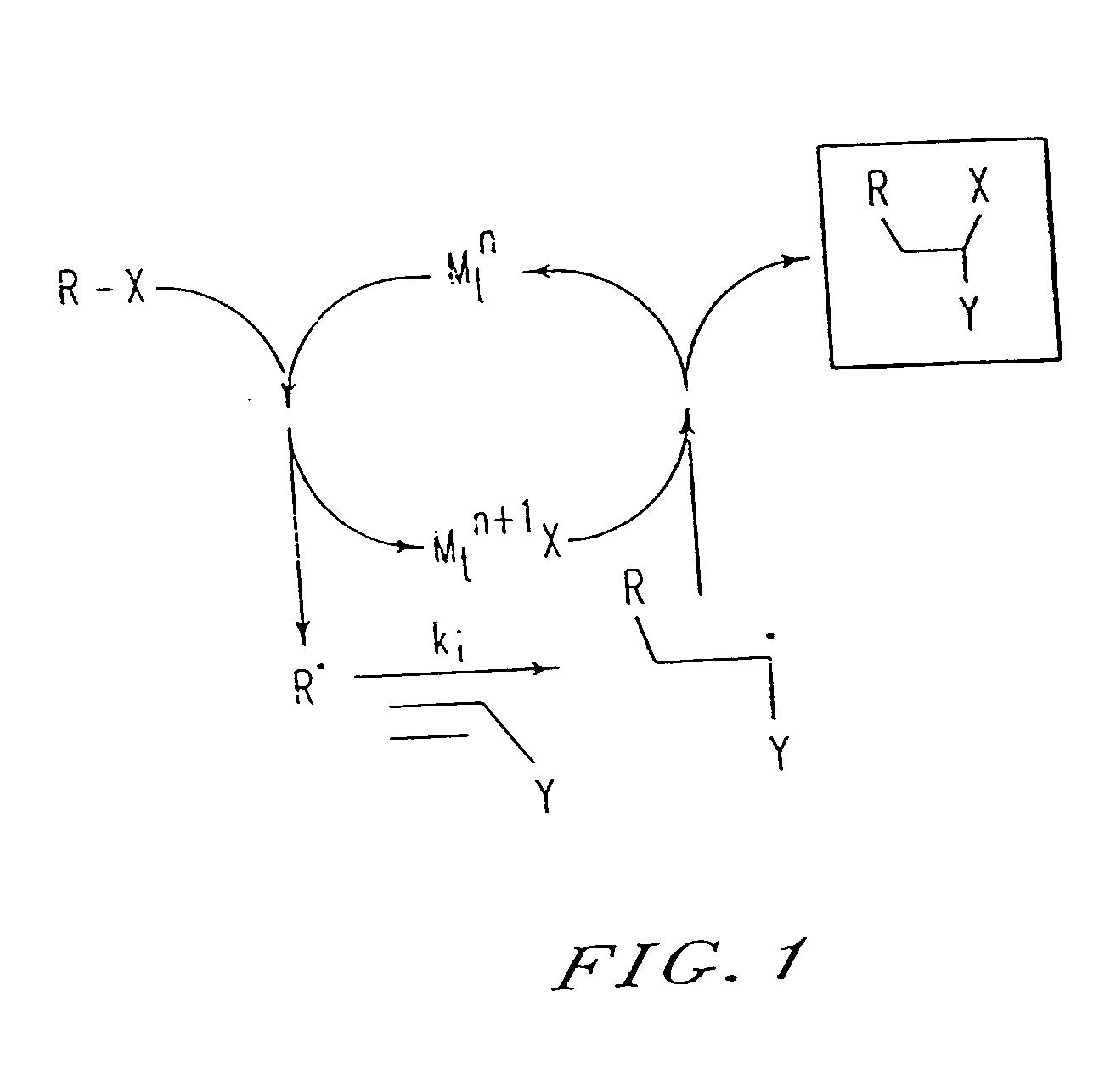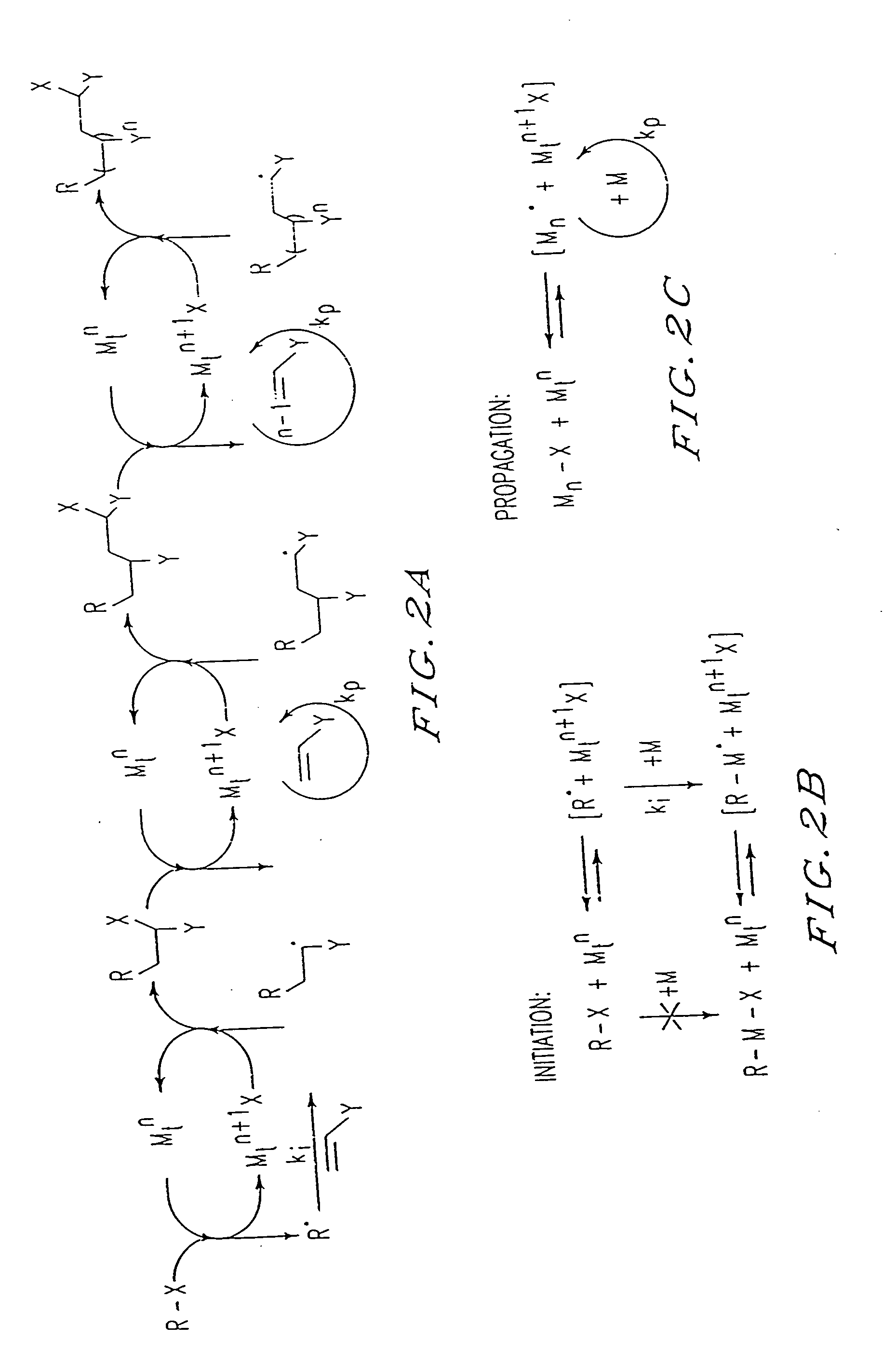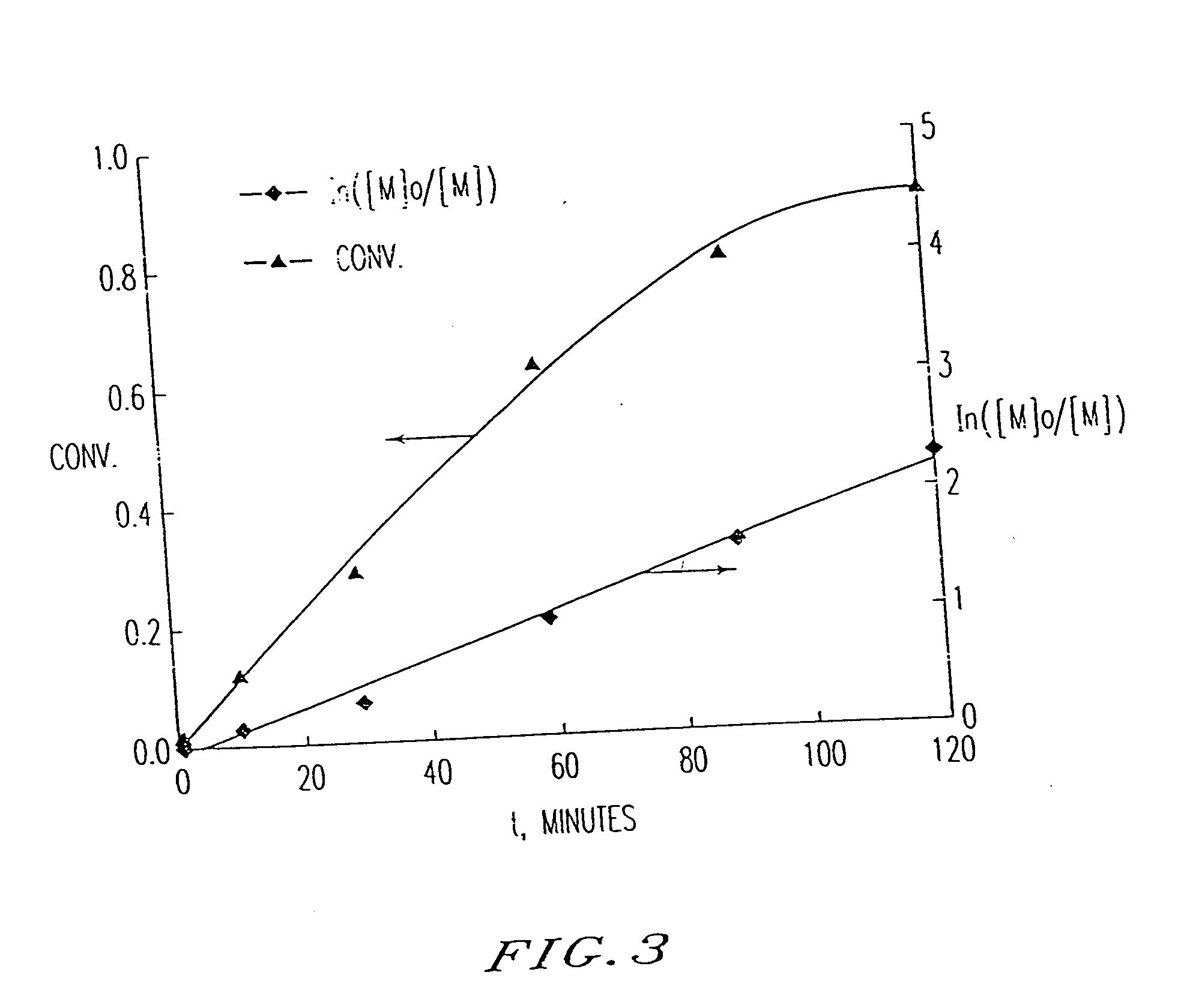Noel (co) polymers and a novel polymerization process based on atom (or group) transfer radical polymerization
a radical polymerization and noel technology, applied in the direction of graft polymer adhesives, adhesive types, coatings, etc., can solve the problems of difficult control of molecular weight and polydispersity, certain block copolymers cannot be made by other polymerization processes, and none of these “living” polymerization systems includes an atom transfer process, etc., to achieve a high degree of control over the polymerization process
- Summary
- Abstract
- Description
- Claims
- Application Information
AI Technical Summary
Benefits of technology
Problems solved by technology
Method used
Image
Examples
example 1
[0193] An aralkyl chloride, 1-phenylethyl chloride, 1-PECl, is an efficient initiator, and a transition metal halide, CuCl, complexed by 2,2′-bipyridine, bpy, is an efficient chlorine atom transfer promoter. This model initiating system affords controlled polymers with predicted molecular weight and narrower molecular weight distribution, Mw / Mn<1.5, than obtained by conventional free radical polymerization.
[0194] Phenylethyl chloride, 1-PECl, was prepared according to a literature procedure (Landini, D.; Rolla, F. J. Org. Chem., 1980, 45, 3527).
[0195] A typical polymerization was carried out by heating a reddish brown solution of styrene (St), 1-PECl (0.01 molar equiv. relative to monomer), CuCl (1 molar equiv. relative to 1-PECl), and bpy (3 molar equiv. relative to CuCl), in a glass tube sealed under vacuum at 130° C. (The reddish brown color of a slightly heterogeneous solution was formed within 30 seconds at 130° C.) The formed polymer was then dissolved in THF and precipitate...
example 2
[0201] The same initiating system, 1-PECl / CuCl / Bpy (1 / 1 / 3), can be also used for the controlled polymerization of acrylic monomers, such as methyl methacrylate, MMA, methyl acrylate, MA, and butyl acrylate, BA. Block copolymers of St and MA have been produced using the same technique as described in Example 1 for homopolymerization of styrene (see the Examples below). Heating of chlorine atom end-capped polystyrene (0.5 g, Mn=4000, Mw / Mn=1.45) and a two-fold excess of MA (1.0 g) in the presence of 1 molar equiv. of CuCl and 3 molar equiv. of bpy (both relative to polystyrene) at 130° C. results in MA block polymerization to form the desired PSt-b-PMA block copolymer (yield: 95%, Mn=13,000, Mw / Mn=1.35).
Discussion
[0202] By analogy with transition metal catalyzed atom transfer radical addition reactions (ATRA), used in organic synthesis, the results presented herein can be explained by the mechanism shown in FIG. 2. The present process appears to involve a succession of ATRA processe...
example 3
[0214] Polystyrene was prepared by heating styrene (0.9 g), 1-phenylethyl chloride (1 μL, 7.54×10−6 mol), Cu(I)Cl (7.54×10−6 mol) and 2,2′-bipyridine (Bpy; 2.26×10−5 mol) at 130° in a sealed tube for 21.5 h. The polymerization reaction mixture was then dissolved in THF, and precipitated in methanol. The precipitated polymer was filtered, and the dissolving, precipitating and filtering steps were repeated two additional times. The obtained polymer was dried at 60° C. under vacuum for 48 h.
[0215] The dried polymer had a number average molecular weight as measured by size exclusion chromatography (SEC), MnSEC, of 95,000, in good agreement with the theoretical number average molecular weight, Mn,th., of 102,000. The dried polymer was obtained in 85% yield. The polydispersity, Mw / Mn, was 1.45.
PUM
| Property | Measurement | Unit |
|---|---|---|
| molar ratio | aaaaa | aaaaa |
| molar ratio | aaaaa | aaaaa |
| molar ratio | aaaaa | aaaaa |
Abstract
Description
Claims
Application Information
 Login to View More
Login to View More - R&D
- Intellectual Property
- Life Sciences
- Materials
- Tech Scout
- Unparalleled Data Quality
- Higher Quality Content
- 60% Fewer Hallucinations
Browse by: Latest US Patents, China's latest patents, Technical Efficacy Thesaurus, Application Domain, Technology Topic, Popular Technical Reports.
© 2025 PatSnap. All rights reserved.Legal|Privacy policy|Modern Slavery Act Transparency Statement|Sitemap|About US| Contact US: help@patsnap.com



